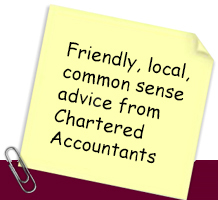Tax year-end is fast approaching.
Below are some planning opportunities to consider in advance of the 5th April tax year-end.
1. ISAs
The annual subscription limit is £20,000 for adult ISAs, £9,000 for Junior ISAs.
You can hold, and contribute to, both cash and stocks and shares ISAs in the same year, albeit the annual subscription limit applies in aggregate, not per ISA.
ISAs are highly tax efficient, with any subsequent income and capital gains completely tax-free.
Note, those that are eligible might consider directing up to £4,000 of the £20,000 subscription limit towards a Lifetime ISA, in order to benefit from a 25% government bonus. Funds can subsequently be put towards a first property purchase, or towards retirement (accessible without penalty from age 60).
2. Pension contributions
Generally speaking, pensions offer the most tax efficient form of saving/investment:
- Pension contributions qualify for tax relief at your marginal rate of income tax. That means a £1,000 contribution would cost a basic-rate taxpayer £800, a higher-rate taxpayer £600 and an additional-rate taxpayer £550.
- Tax-free income and gains within the pension,
- You are able to draw up to 25% funds tax-free (subject to available Lifetime Allowance) from Minimum Pension Age, currently 55, but set to increase to 57 from 2028, and
- The funds sit outside your estate for inheritance tax purposes, therefore now playing a key role in estate planning.
Also note, pension contribution has the effect of reducing your taxable income, which may have a knock-on effect on the taxation of any dividend income or capital gains (e.g. ensuring these are taxed only at the basic rate of tax rather than higher). Similarly, it can be used to reclaim Personal Allowance (potential 60% tax relief) or reduce a High Income Child Benefit Charge.
But how much can you contribute?
Generally, this is the lower of:
- ‘Relevant earnings’ (generally, income from employment or self-employed profits, albeit rental income from a furnished holiday letting is also included here),
- Available annual allowance, including carry forward from the previous three tax years,
- Subject to a minimum of £3,600 (gross) per year.
The annual allowance is £40,000 per person per tax year. However, this is tapered at a rate of £1 for every £2 that adjusted income (generally, salary plus employer pension contributions) exceeds £240,000, down to a minimum £4,000 (where adjusted income exceeds £312,000).
Annual allowance calculations can be complicated, particularly where there is some defined benefit pension accrual involved too. If you need any help here, please let us know.
3. Crystallise some capital gains
Taxable capital gains are taxed at 10% to the extent they fall within an investor’s basic-rate tax band (18% for residential property), or 20% above (28% for residential property).
However, investors have an available ‘annual exempt amount’ of £12,300 each tax year. That is, you can realise taxable gains up to £12,300 without incurring any capital gains tax (CGT).
It’s therefore ‘good planning’ to utilise this each and every year, even where you don’t require any capital from an investment portfolio, to prevent, or at least reduce, the build-up of CGT over time.
For example, say an investor has shares in a fund that have risen from £100,000 to £150,000, an unrealised gain of £50,000.
They could sell approx. 24.6% their holding, thereby crystallising a gain of £12,300, in order to mitigate the build-up of a potential CGT charge over time.
They could then immediately buy the same shares back in a different account (e.g. ISA, so-called ‘bed-and-ISA’), or different name (e.g. ‘bed-and-spouse’). Alternatively, they could buy the same shares back in the same account once 30 days have passed, or simply buy something different altogether.
4. VCTs
Each tax year, you can invest up to £200,000 in VCTs.
These represent collective investments in portfolios of small, high growth, typically tech-focussed, and typically non-listed, companies. They mainly operate in areas such as e-commerce, health-tech, ‘deep-tech’, software, data analytics, renewables, autonomous driving, e-mobility, wearable technology, gaming, etc. And dare I say it, the ‘metaverse’…
These aren’t for everyone, but for some, they represent a viable investment option, certainly for a portion of investable assets.
This is particularly true for those ‘locked out’ of pension contribution due to earnings (see ‘tapered annual allowance’ above), or simply looking to diversify a wider investment portfolio.
And VCTs offer significant tax benefits:
- 30% tax relief on initial investment (as long as shares are held for 5 years, otherwise it’s clawed back),
- Tax-free dividends (the main sources of return, upon sale of underlying investee companies),
- Tax-free gains.
Note, tax relief is only available on subscription to new shares – most VCTs raise funds each year, typically between December and April. The current ‘VCT season’ has seen strong demand for new offers, but there are still some decent ones open.
5. Gifting
Finally, for those looking to mitigate a potential inheritance tax charge on their estate, it’s important to make use of available ‘gifting exemptions’. The three most common are:
- The £3,000 annual exemption (including any unused exemption from the previous tax year),
- The £250 small gifts exemption – a person can make as many outright gifts of up to £250 per person per tax year as they wish, as long as the recipient does not also receive part of the donor’s £3,000 annual exemptions.
- The ‘normal expenditure out of income’ exemption. Any gift is exempt from IHT as long as i) it is regular in nature, ii) it is made out of income (not capital) and iii) it does not impact the donor’s standard of living (i.e. it is made out of surplus income).
If you would like more information on any of the above, please call us on 01242 370298.

